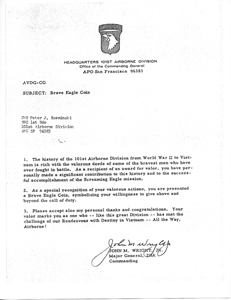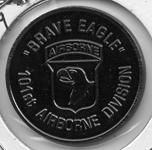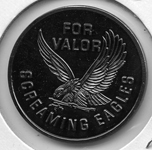Last updated on 4/7/24
View My Guestbook
Sign My Guestbook

Last updated on 4/7/24
Site established on 3/22/01
|
1st Brigade, 101st Airborne
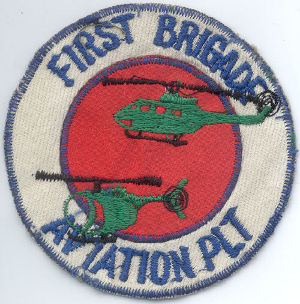
Our 1st patch. It says Platoon but we were a detachment.
Image courtesy of Pete Rzeminski, CW2 (8/68 - 12/69), HHC (Avn Det), 1st Brigade, 101st Abn Div
|
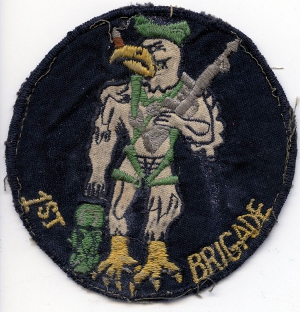
Our second and last patch for the 1st Brigade. We wore them on our helmet bags.
Image courtesy of Pete Rzeminski
|
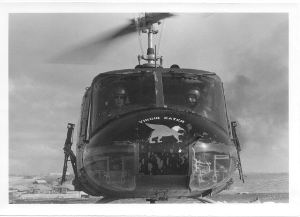
We used the Griffin call sign for the UH-1's and the Little Griffin call sign for the LOH's. I recall, some time before I left in 69, that we had to give up the Griffin call sign because some other unit was using it. One of the nose paintings was "Virgin Eater”. Another was "Cherry Popper." This was based upon the logic that the mythical griffin only ate virgins - a perfect theme for young male pilots.
Pilots' names in this shot are; left as you face the chopper - CWO Bruce Sutton, and right as you face the chopper - CWO Richard Vonhatten.
Image courtesy of Pete Rzeminski
|
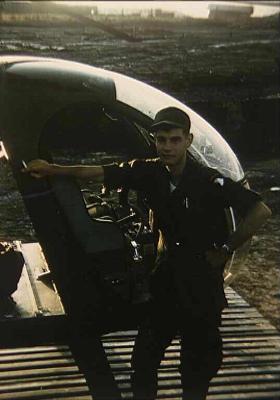
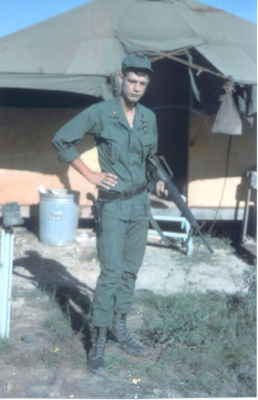
I was with HHC (Avn Det), 1st Bde, 101st ABN Div, from August 1968 to December 1969. When I first arrived, all we had were OH-23's and a few UH-1D's. We used the Griffin call sign for the UH-1's and the Little Griffin call sign for the LOH's. I recall, some time before I left in 69, that we had to give up the Griffin call sign because some other unit was using it. Also, the required "I'm so cool" picture of a GI holding a weapon.
Image courtesy of Pete Rzeminski, CW2 (8/68 - 12/69), HHC (Avn Det), 1st Brigade, 101st Abn Div
|
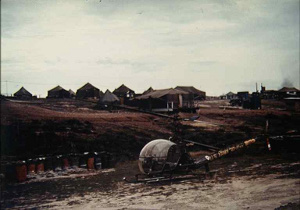
This is one of our OH-23's. We flew them until they were replaced with OH-6A's.
I was taking a stan-ride on one. We were at a hover when suddenly the power died, and I pulled a perfect autorotation. I looked at the other pilot, and I said I didn't expect you to pull a throttle-off maneuver here. We were in a cemetery area which was outside of the perimeter of Camp Eagle. He stated that he hadn't cut the power, he thought that I had. It turned out that the engine had thrown a piston. We had to call in that we were down and needed to have the chopper recovered and for us to hitch a ride.
You can see what luxury we lived in: GP-Medium tents, outhouses (which had a cut down oil-drum, which was pulled out each day and the contents burned with diesel oil), no regular shower points, yet. This was in the August/September 1968 time-frame. Notice the tent with the white wood trim, above the chopper. That was the O-Club. We did have some priorities straight.
Image courtesy of Pete Rzeminski
|
The CG of the 101st Airborne Division stated handing out "Brave Eagle" coins when a soldier received an award for valor. I think that this may be among the early beginnings of the challenge coin.
Image courtesy of Pete Rzeminski
|
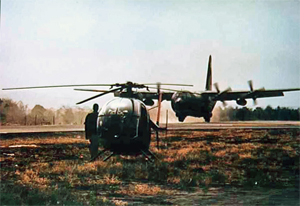
On 15 May 1969, elements of the 1st Brigade started to redeploy from Camp Eagle to move south to the Chu Lai-Tam Ky area and, under the operational control of the Americal Division (Operation Lamar Plain), find and defeat the enemy. This photo is at the Tam-Ky airfield as elements of the 1st Brigade started arriving. That is my LOH with my crew chief standing next to it.
Image courtesy of Pete Rzeminski, CW2, 68-69
|
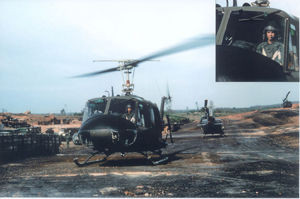
This is a picture of me in my UH-1. It's on the "flight line" at Camp Eagle, I Corps.
Image courtesy of Pete Rzeminski, CW2, 68-69
|

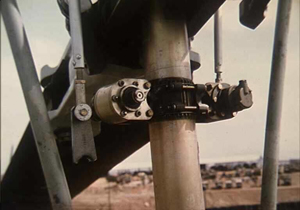
When one of the UH-1's came in from a mission, it had a few bullet holes. The one pointed to is just behind the aircraft commander's seat. The other is a picture of the "push-pull" rod being shot off of it's mount. The pilots didn't even know that had happened until they performed their post flight check.
Image courtesy of Pete Rzeminski, CW2, 68-69
|
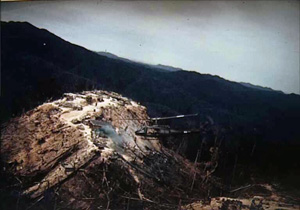
This is a firebase located west of Camp Eagle, I Corps, in the mountains overlooking the A Shau Valley. I'm in a UH-1 taking the picture of another unit's huey making an approach to the landing pad. The landing pad is that small square of PSP (pierced steel plating) in the front edge (facing us) of the fire base. You can see that "smoke was popped" so the pilot could judge which way the wind was blowing. When we took off at sea level overloaded, which was common, we had to approach almost level with the pad; using a shallow glide slope, so we wouldn't fall through the landing and over torque the transmission. Over torquing the transmission irritated the crew chief a-whole-lot.
Image courtesy of Pete Rzeminski, CW2, 1st Bde, 101st Abn, 68-69
|
All images remain the personal property of this site and the contributor of the photo. You
may download them for your personal use but they may not be published or used
on any other site without written permission from the webmaster and the contributor.
|






